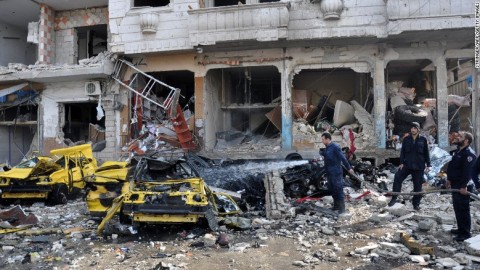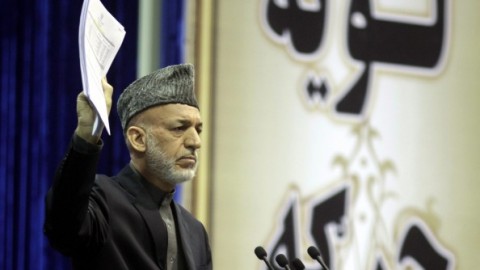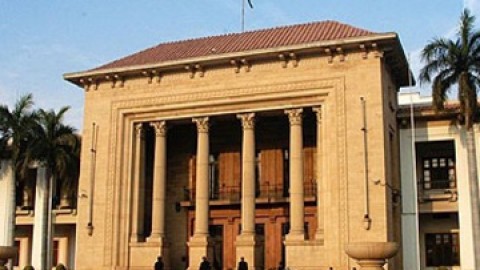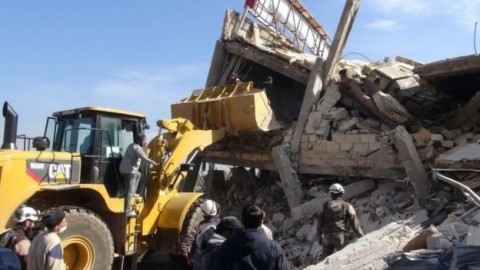Schools, offices and construction projects have been stalled until mid-Thursday

Lintao Zhang/Getty Images
Beijing: Even as Chinese leaders deliberate over carbon emissions in the Climate Change Summit in Paris, the city of Beijing has been overtaken by a new bout of pollutants in the air. In counter actions, the Chinese authorities have placed strong limitations on car use and factory production. Moreover, an alert of danger was imposed in Beijing on Monday, which is the highest level of warning in the 4-tier pollution control system adopted by the Chinese 2 years ago. Although pollution levels have approached worst measurements in the past, the alert was placed as an early repercussion after the sky was seen clearing up slightly in the last two months, due to controlled car use.
In the early hours of Tuesday, the reading on the pollution monitor in the American Embassy established that there was a large spike in pollution levels, as it showed a massive 291 micrograms per cubic meter, while the intensity of the particles was PM 2.5. In the next 4 hours, this decreased to 250 micrograms per cubic meter, which is still an indicator of ‘very unhealthy’ pollutant levels. The World Health Organization (WHO) recommends 25 micrograms per cubic meter as the maximum safe level. Some parts of Beijing were said to entertain visibility levels of just 200m or 660 feet.
Activists and authorities said that the excessive vehicle emissions, heating systems, dust particles and industry emissions have led to this predicament, aggravated by the lack of wind and the rise in humidity., In that light, the expected arrival of the cold front on Thursday is likely to clear away the envelope of smog. Schools and other public buildings were advised to remain shut unless they have advanced filtration systems, while car have been restricted to alternate days of use, depending on their number plates (odd/even). Additional public transport has been provided for the demand.

Getty Image
You have to do whatever you can to protect yourself,” Beijing resident Li Huiwen commented,” Even when wearing the mask, I feel uncomfortable and don’t have any energy.” While the geographic characteristics of Beijing has encouraged the poor air quality—it is surrounded by industries in many areas—it has also been accepted by the community in general that China has pushed economical ambitions far ahead than the environmental balance. It is a sharp warning to us that we may have too much development at the price of environment and it is time for us to seriously deal with air pollution,” quoted Beijing worker Fan Jinglong. While in the long-term, the effects of extreme air pollution may be economical, for now, the health of the Chinese has been adversely affected, with at least 1.4 million premature deaths being reported.
Meanwhile, other cities in China like Shenyang have seen pollution level as far as 1,400 micrograms per cubic meter recently. Furthermore, the city of Nanjing had issued a red alert in December 2013. although Greenpeace had been urging Chinese officials to place a red alert for a while, the authorities had published an orange alert on November 30 this year, the second-highest level. It is important to note that until October this year, the air quality was improving bit by bit in the country.
While the Chinese have not made any commitments on the issue in the past, they now understand that the use of fossil fuels in its activities must be cut drastically, seeing has the country runs on 60% fossil fuel energy for primary activities. For that matter, the resolution in Paris is unlikely to bring a hard change in the Chinese air quality immediately, but the resolve to invest further in renewable sources of energy will, at some point, cut the world’s worst polluter’s carbon footprint. This is encouraged further by the revelation that in the last year or so, carbon emissions across the world have fallen, despite an expansion in the world economy.
Source: BBC
Tags: Beijing China China pollutions








